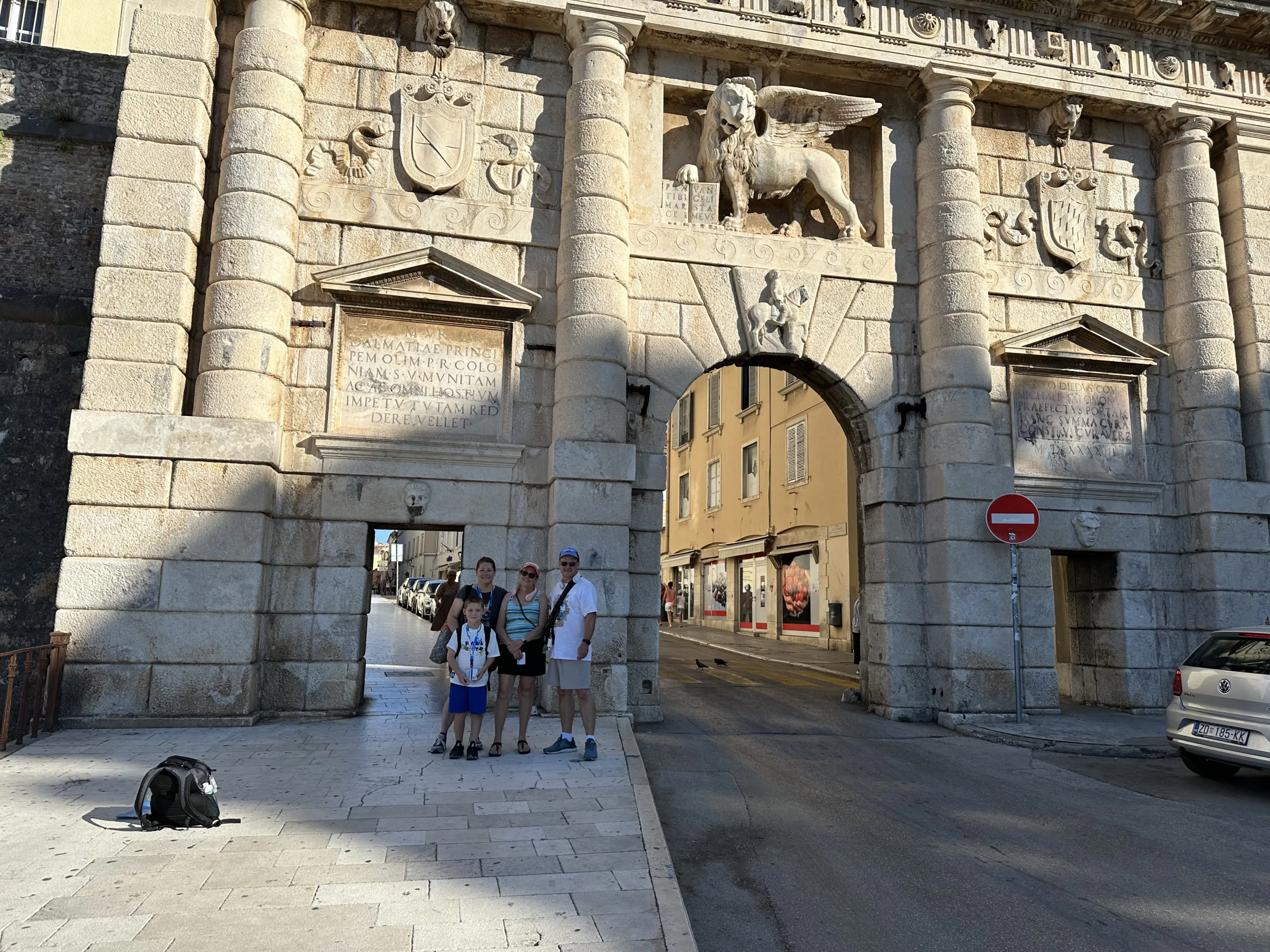We entered Zadar’s old town through the Land Gate, the main entrance into Zadar. It was built by Michele Sanmicheli in 1543 and it has a large central arch and two smaller arches for pedestrians. Several other gates provide access through the intact city walls, including the Bridge Gate and Sea Gate. It was early in the morning, so the streets were still pretty clear as we checked out the People’s Square and the Church of St. Chrysogonus, the patron saint of Zadar.
Then it was on to check out the Church of St. Donatus, and the Roman Forum. The Roman Forum was commissioned by the first Roman Emperor Augustus, sometime between the 1st century BC and 3rd century AD. The Church of St. Donatus was built sometime in the 9th century by the Zadar bishop, Donatus.
We stopped at the Archology Museum that was across from the ruins. We started on the second floor, which exhibits prehistoric ceramics and weaponry from Greece and Italy. The first floor covered the Classical period, from the 1st century BC to the Roman settlement in the 6th century AD. The ground floor has exhibits from early Croatian graves near Nin, and stone furniture from churches from the early Middle Ages, 8th to 11th centuries.
Continuing around the tip of Old Town, we experienced the Sea Organ, a giant musical instrument powered by the waves and wind to produce random harmonic sounds. The Greeting to the Sea is a large solar array that collects energy to display a night-time light display. Unfortunately, we weren’t around at night to see the display. There were also some interesting boats in the harbor, including some tourist submarines and a huge sailing boat.
After a light lunch of pizza and charcuterie, we walked down to the beach to cool off from the hot afternoon temperatures, before having a taxi bring us back to the ship.










































